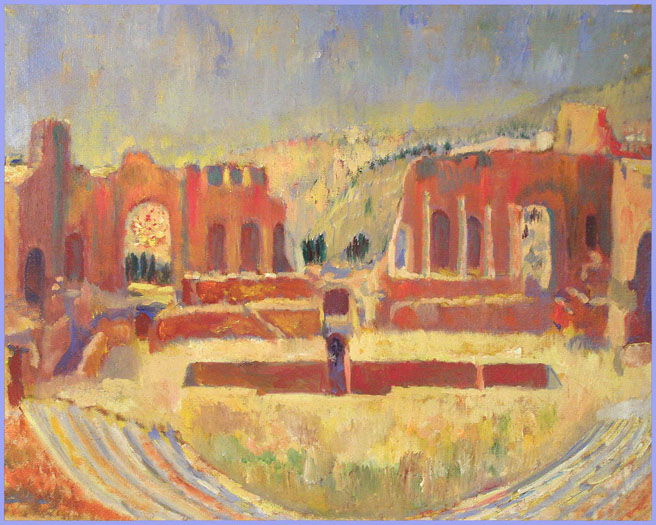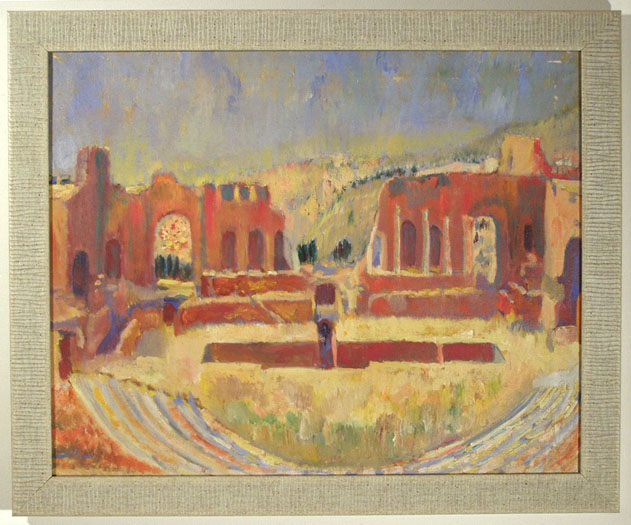
Expressionist oil on canvas by Francoise V. Clarke-Fort (also known as Francoise V. Fort or Francoise Clarke) depicting the famous `Greek Theatre` in Taormina, Sicily.The setting sun can be seen above the cypress trees, glimpsed through the arch on the left hand side. Francoise Clark Fort was a wealthy socialite and friend of Sheila van Damme, owner of the Windmill theatre and famous 1950`s rally driver. Clarke-Fort was her co driver on many occasions in the 1950`s and together they drove successfully for the Rootes group team in their Sunbeam Talbot in rallies in France and the rest of Europe. She seems to have been quite prolific, especially from the 1950`s onwards, and many of her paintings appear to be of the South of France and other haunts of the `Jet Set`!
The painting is housed in a contemporary `retro`textured frame and is ready to hang. A painting with an interesting subject and history - Would look great in a contemporary interior.
| Medium | oil on canvas | Condition | excellent unfaded |
| Image size | 20 x 16 inches | Provenance | signed and titled verso |
| Overall size | 22.5 x 18.5 inches | ||
| Age | c.1962 | Price | SOLD AUGUST 2016 |

The ancient theatre of Taormina
The most remarkable monument remaining at Taormina is the ancient theatre (the teatro greco, or "Greek theatre"), which is one of the most celebrated ruins in Sicily, on account both of its remarkable preservation and of the surpassing beauty of its situation. It is built for the most part of brick, and is therefore probably of Roman date, though the plan and arrangement are in accordance with those of Greek, rather than Roman, theatres; whence it is supposed that the present structure was rebuilt upon the foundations of an older theatre of the Greek period. With a diameter of 109 metres (after an expansion in the 2nd century), this theatre is the second largest of its kind in Sicily (after that of Syracuse); it is frequently used for operatic and theatrical performances and for concerts. The greater part of the original seats have disappeared, but the wall which surrounded the whole cavea is preserved, and the proscenium with the back wall of the scena and its appendages, of which only traces remain in most ancient theatres, are here preserved in singular integrity, and contribute much to the picturesque effect.